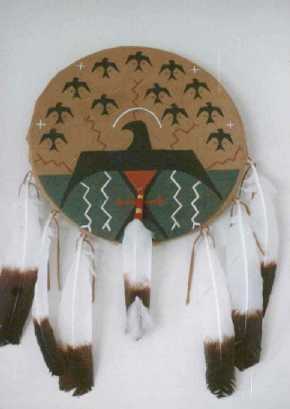
(some
samples)
Copyright©
2001-2004 Frithjof Schuon
(All rights reserved)
Frithjof Schuon was not only a metaphysician in the tradition of Shankara, Plato, Plotinus and Meister Eckhart, he was also a painter. His paintings, sketches and drawings illustrate with depth and talent the aesthetic principles expressed in his books ("The Beautiful is the Splendor of the True" as he liked to remind it) and in his poetry. He wrote several chapters about art in various books.
What is striking, in all these texts, is to see how much Schuon manifests a deep sense of forms, visual forms and colors for that matter. For him, the forms which surround us condition strongly, and insidiously when they are ugly, our soul. The modern world, the world of industrial societies, as opposed to traditional worlds, those which are mostly determined by one of the great religions, displays almost everywhere the cult of the ugly and of the offensive. Reacting against this quite "diabolical" tendency, Schuon redefines, with an amazing clarity, what the Beautiful is objectively (a definition which has nothing to do with the notions of neoclassical aesthetic canon) and leads us, throughout his books, to all the "beauties" that mankind produced throughout history, in order to extract their quintessence.
As
for his paintings, they express the most intimate and inward aspects of
his doctrine
(Ends, the visible and the Intelligible, meet). See, below and throughout
this site, some examples of these paintings. For a hard copy of most of
Frithjof Schuon's paintings, see the two books published by World Wisdom
Books and Abodes:
- The Feathered Sun, Plains Indians in art and Philosophy, by Frithjof Schuon, with an introduction by Thomas Yellowtail, World Wisdom Books, USA
- Images of Primordial and Mystic Beauty, paintings by Frithjof Schuon and one of his students, with an introduction by one of his associates; Abodes, Bloomington, Indiana, USA, Amazon.com.
Paintings
2 -- Paintings 3 -- Paintings
4
Peintures 1 -- Peintures
2 -- Peintures 3 -- Peintures
4 -- Peintures 5
Message of a Vestimentary Art
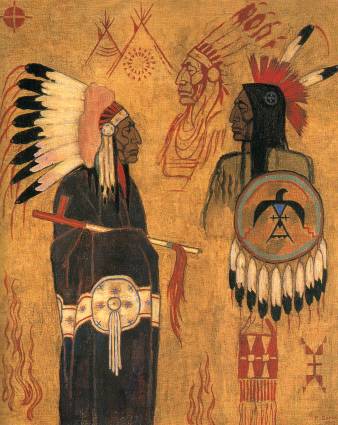
"The
existence of princely and priestly garments proves
that clothing confers a personality upon man,
that it expresses or manifests a function
which may transcend or ennoble the individual."
(To Have a Center, p. 159)
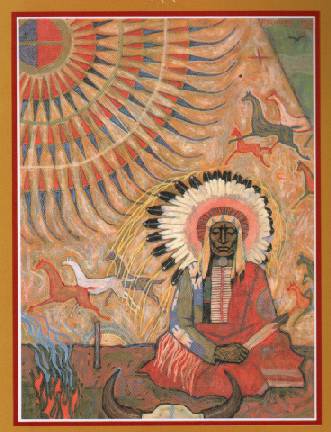
"One
of the most powerful symbols of the sun is the majestic headdress
made of eagle feathers; he who wears it is identified with the solar orb,
and it is easy to understand that not everyone is qualified to wear it;
its splendor - unique of its kind among all traditional headdresses
in the world - suggests both royal and priestly dignity,
thus the radiance of the hero and the sage."
(To Have a Center, p.162)
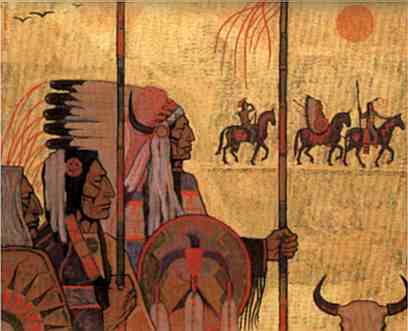
"According
to the French authors Thévenin et Coze it is
"the most majestic headdress ever conceived by the human genius"
(Moeurs et Histoire des Indiens peaux-rouges).
Sometimes the feather bonnet is adorned with the horns of the buffalo,
which adds to it a pontifical symbol. The feathered spear - the solar ray -
prolongs the headdress in a dynamic and combative mode."
(To Have a Center, p.162, Note 3)
Portraits
of Indians
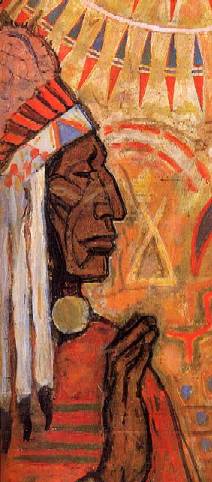
"Dignity
is the ontological awareness
an individual has of his supra-individual reality."
(Spiritual
perspectives and Human Facts, p. 210)
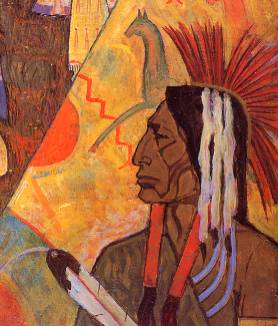
"Pride
consists in taking ourselves for what we are not.
Self-respect is knowing what one is
and not allowing oneself to be humbled."
(Spiritual
perspectives and Human Facts, p. 205)
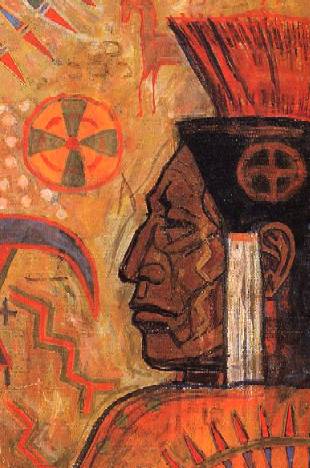
"Forms
allow of a direct and 'plastic' assimilation
of the truths - or the realities - of the spirit."
(Spiritual perspectives and Human Facts, p. 28)
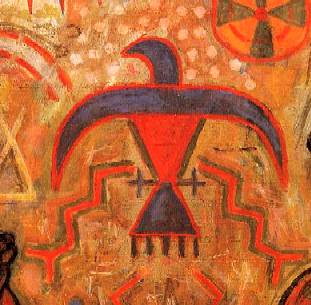
"Beauty
mirrors happiness and truth. Without the element of 'happiness'
there remains only the bare form, geometrical, rhythmical or other;
and without the element of 'truth' there remains only
a wholly subjective enjoyment, or luxury if you will.
Beauty stands between abstract form and blind pleasure,
or rather combines the two so as to imbue veridical form with pleasure
and veridical pleasure with form."
(Spiritual perspectives and Human Facts, p. 29)
